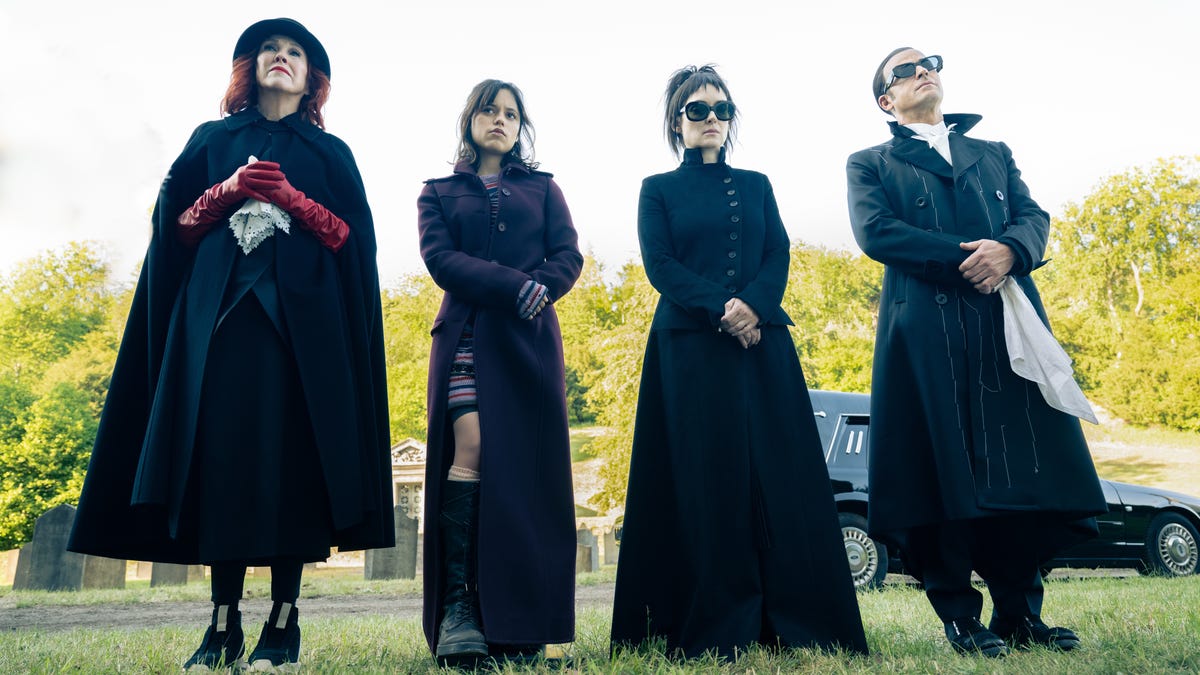‘Beetlejuice Beetlejuice’ presents a refreshingly positive perspective on grief and mortality
Most individuals find discussions about death uncomfortable.
This reluctance is understandable: thinking about or talking about the end of life can create a heavy mood. The topic often brings feelings of fear, awkwardness, and sadness.
However, in a film like “Beetlejuice Beetlejuice,” the sequel to the 1988 classic, death is a common theme − quite literally. (Warning: Light spoilers for “Beetlejuice Beetlejuice” ahead!)
A large portion of the new film (now in theaters) unfolds in the Afterlife, where souls go once their time on earth comes to an end. Here, Charles Deetz (played by Jeffrey Jones in the original movie), who has met a rather abrupt demise in a series of gruesome incidents, finds himself in the Afterlife waiting area at the start of “Beetlejuice Beetlejuice.”
The film then delves into the impact of his death on his family and the events triggered by his passing.
It’s challenging to predict one’s emotions or reactions upon the death of a close friend or family member.
Perhaps you’ll weep uncontrollably. You might feel utterly numb or completely indifferent. Or you could find yourself spiraling into an existential crisis, questioning life’s meaning.
But Delia Deetz (Catherine O’Hara), the widow of Charles, opts for a different approach. Upon his passing, she announces the establishment of a “grief collective.”
This collective appears to be more than just an extended period of mourning or a meal after the funeral. Beyond the wake and burial, Delia is organizing various culturally significant ceremonies to pay tribute to her late husband, including an outlandish ritual involving real snakes. At the burial, a youth choir performs a mournful version of Harry Belafonte’s “Banana Boat,” famously tied to the first movie. The Winter River home, which Delia despised but Charles adored, becomes a gathering spot draped in black fabric for this occasion.
And Delia is only getting warmed up. The character, whose artistic career seems to have skyrocketed since we last saw her, has always had a flair for the dramatic and a craving for the spotlight.
Delia may come off as self-absorbed, but she has a point with her grief collective.
While her behavior may appear self-serving, turning her husband’s death into a spectacle, her efforts center around Charles. She returns to a town she dislikes for his sake. She encourages family members to come together and foster connections, all while expressing her own feelings of loss and the significance of Charles in her life.
Delia might be mourning just as deeply, if not more than anyone else.
Grief is complex and varies from person to person. Even within an individual, different losses can evoke contrasting responses.
However, one of the most challenging aspects of grief may be the tendency to deny our own emotions. Delia’s grief collective serves as a liberating invitation to express grief openly and dramatically, rather than feigning indifference.
The grief collective also emphasizes celebrating the life of the departed, their legacy, and what they cherished, even if those aspects don’t resonate with everyone involved.
“Beetlejuice Beetlejuice” delivers reminders that life is temporary, death is generally irreversible, and most importantly, life is meant to be lived by those who remain.

